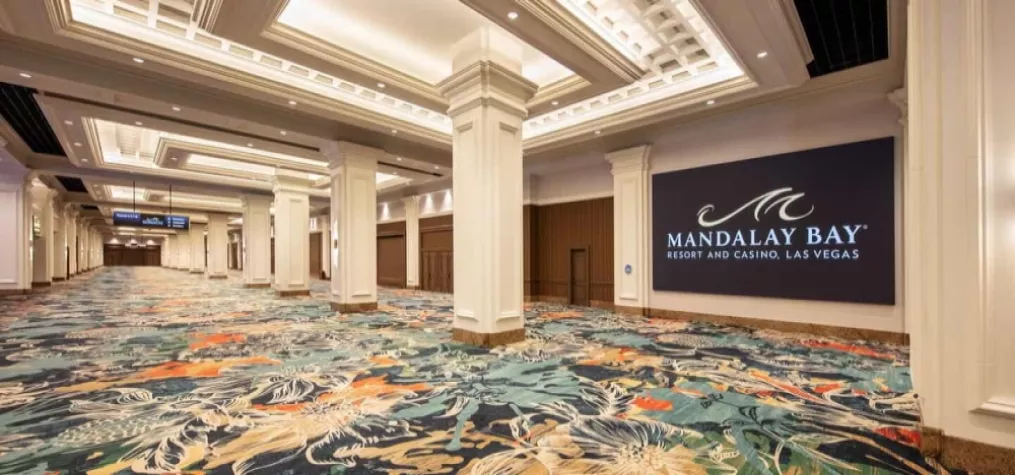How to Make Virtual Events Engaging

In a time where most face-to-face meetings aren’t an option, many event professionals are turning to virtual events. But as we all know, it can be difficult to keep a remote audience engaged.
How many times have you signed up for a webinar with the best of intentions, only to realize midway through that you’ve been multitasking — checking email, browsing the web or talking to your coworker who just had “one quick question”? Or, you signed up for a virtual event only to experience difficulty with logging in, viewing the livestream or seeing pop-ups such as polls? These are the types of issues that virtual and hybrid event organizers need to take into consideration when planning effective events.
We sat down with virtual and hybrid event host Emilie Barta to get tips for planners on virtual audience engagement. Barta, who also provides trade show presentations for exhibitors, has more than 20 years of experience creating engaging content and delivering presentations for both virtual and in-person audiences.
Barta says that virtual audiences have three demands:
· Content — they want to be informed
· Engagement — they want to be included
· Production — they want to be entertained
To ensure that people stay engaged, she says that planners of virtual and hybrid events need to keep these needs top-of-mind during the planning and decision-making process.
Human Connection
The core of every event, whether face-to-face or virtual, is human connection. But even live event organizers struggle with this concept (think of a traditional keynote, which is effectively a push communication with little to no audience interaction). And it’s even harder to achieve human connection in a virtual setting. Barta says planners tend to forget the human element of a virtual event and consequently neglect the virtual audience.
To mitigate this, “every communication tool must be constantly moderated with back-and-forth conversation,” she says, “and the virtual audience must be allowed to ask questions and have their voices heard.”
Depending on the type of event and delivery mechanism, these communication tools may include your digital event platform and social media channels. A designated moderator should ask for questions from the audience, and both gather them for the speaker to answer and also respond directly to any incoming questions when possible. The moderator can also encourage participation via these channels.
Barta also recommends training speakers on how to make eye contact with the camera (as if the virtual audience member is sitting right there in the room), and for hybrid events, also educating them on how to speak with the virtual audience while not alienating the in-person audience.
“The technology and the platform are just tools,” she says. “Tools are not engaging. People are engaging. So any person involved in the virtual event must continually interact with the virtual audience.”
Know Your Audience
Barta advises planners to remember why people are attending the event. Whether it’s in-person or virtual, your audience is likely there for education and networking, so ensure you are providing both.
“Know the demographics of your audience and provide them with tools they feel comfortable using to interact with you, the speakers and each other,” she says. In addition, have dedicated hosts or moderators for every tool that you are using to welcome the virtual audience, encourage them to utilize the tools and make them feel comfortable doing so.”
Design Thoughtfully
If something is boring in person, it is even more so virtually. Developing a program full of fast-paced and current content presented by dynamic speakers is a good start for keeping people engaged.
“Understand that they are actively participating in an event, not passively watching TV, and plan the virtual agenda accordingly,” Barta explains. “Ensure that every minute is accounted for during the run of the event and that the virtual audience never witnesses ‘dead air.’”
Virtual event design goes beyond content. Presenters and moderators should remind and encourage their virtual audiences to get involved throughout the course of the event. Barta also suggests creatively adding dedicated content and interactive activities to help the virtual audience feel like they are truly a part of the event.
For hybrid events, this can include short Q&A segments with presenters or in-person attendees that are broadcast to the virtual audience. For fully virtual events, planners can use engagement techniques such as polls, chats, games, contests and moderated Q&A sessions — ways that people can communicate in real time.
Design Content That’s Compelling and Consumable
While an in-person event agenda can include an entire day’s worth of sessions, this is less likely to work in a virtual setting. Chances are high that virtual audience members are surrounded by constant distractions. Therefore, Barta says that any agenda needs to be respectful of people’s time and other commitments.
She recommends providing dedicated content for the virtual audience and white space so they can step away for five to 15 minutes to take a break between sessions — but making sure you give them a compelling reason to return.
Keeping sessions to 60 minutes or less is a general rule of thumb. Nobody ever objects to having extra time for Q&A should presenters finish early. And if you have a full day of programming, allow a block of time for lunch as well as one or two slightly longer break times.
Don’t Forget Housekeeping
The need for organizers to provide attendees a feeling of comfort within a virtual event can’t be stressed enough. Work with your platform provider to make sure you communicate key technical and logistics information in advance, and have answers (and support) ready to assist attendees (and you, the planner, as well)! If someone can’t log on, or is having buffering issues that prevent them from watching or engaging with your content, you will lose them. If they are submitting questions and nobody is responding, they will feel disenfranchised.
At the beginning of the program, have your presenter or facilitator cover “housekeeping” issues such as how to ask questions, how to contact technical support, how to engage with other attendees, etc. Remind the audience of these items periodically throughout the event to ensure late joiners have the information they need.
Have you had success designing an engaging virtual event? What strategies have worked for you? Share with us on Twitter.


Add new comment